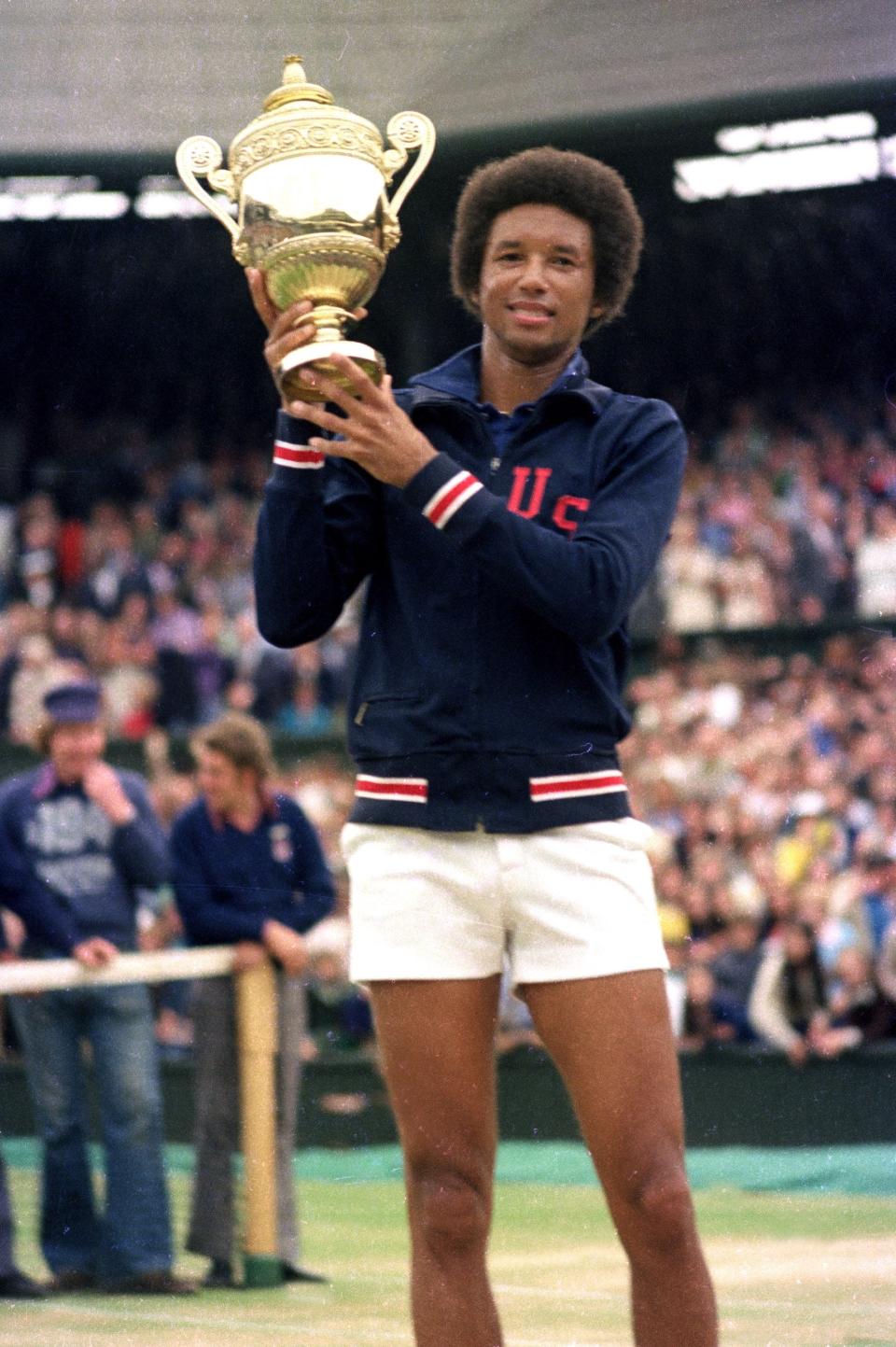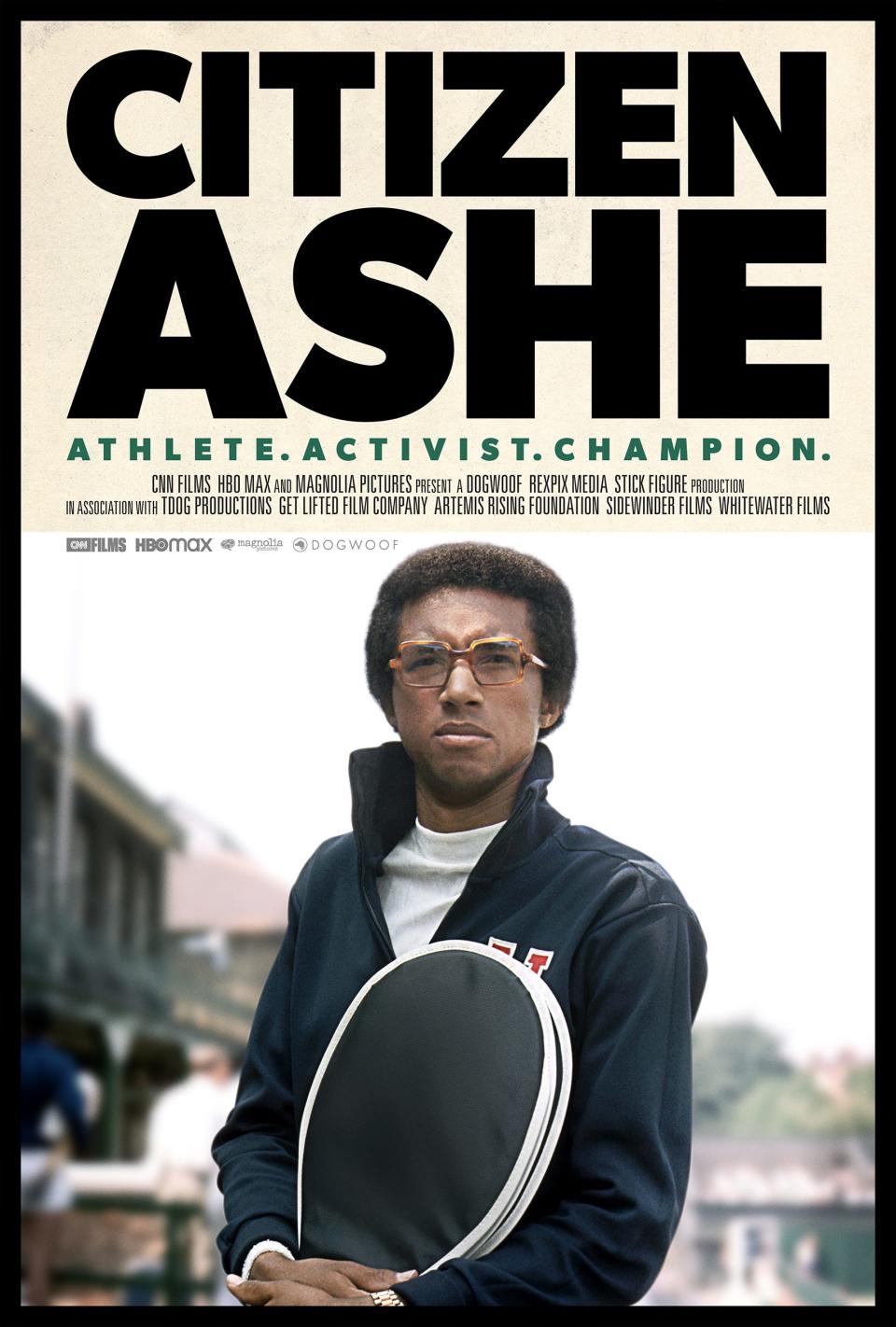Opinion: New Arthur Ashe documentary reveals how tennis icon transformed activism in America
Early on in “Citizen Ashe,” a new documentary from CNN Films and HBO Max, young Arthur Ashe tells legendary broadcaster Howard Cosell, “I’d rather be an American and slightly discriminated against than anything else.”
It was quite a contrast with the way emerging Black athletes of the 1960s like John Carlos or Muhammad Ali talked about racism and civil rights at a time when America was roiling with unrest over a changing social order. And it led many prominent Black voices at the time, including sports sociologist and activist Harry Edwards, to initially view Ashe as a so-called Uncle Tom.
“A lot of people thought that about Arthur Ashe,” said Sam Pollard, who co-directed the film with Rex Miller. “Even I thought it back in the ‘70s. ‘Oh yeah, Arthur Ashe? He didn’t do much.’ But as we learned in the film, he was doing much more than I ever imagined.”
When Miller set out five years ago to make a film about Ashe, who emerged from segregated Richmond, Virginia, to become the No. 1 tennis player in the world, he had no way of knowing that Ashe’s lifelong journey toward activism would be such a relevant topic today.

Almost from the opening credits, the filmmakers establish a very obvious through line from Ashe to the various ways in which Black athletes are using their prominence and voice to advocate for social justice, particularly following the George Floyd murder and the protests that followed in 2020.
“More and more of them who speak out today, Sam and I agree, are standing on the shoulders of Arthur,” Miller said.
But as the film details, Ashe, who died in 1993, felt that he had to take a gradual approach to issues of race largely because of the sport he played. Eventually, he would become associated with significant social issues, including a years-long campaign against South African apartheid and later the AIDS crisis in America. But until he won the U.S. Open in 1968 — five months after the assassination of Martin Luther King, Jr. — Ashe was hesitant to publicly jump into civil rights issues, at one point even rebuffing Edwards’ attempts to recruit him into the movement.
“In Arthur’s words, he was the raisin in the rice pudding,” Miller said. “In track and field, which had a very vocal group of athletes, there were a lot of African-Americans and in 1968 you could say the same thing about all the major league sports. But Arthur was really the only person of color in men’s or women’s tennis at the highest level, so he always felt he had to go about it very pragmatically.”
NEVER MISS A MOMENT: Subscriber to our newsletter for latest sports news and features
Eventually, Ashe earned the respect of the leading Black activists of the 1960s and 1970s, even though his approach and sometimes his views did not line up with theirs.
“It proves that African Americans, be it athletes or every day people, aren’t monolithic,” Pollard said. "We all approach life in different ways, and this film gives you an opportunity to see a legendary sports figure who approached his notion of being a sports figure and an activist in a different way than an Ali or Bill Russell or Jim Brown.”
For much of the 96-minute film, which will debut in New York theaters on Friday with a wider release on HBO Max and CNN slated for next year, Ashe is the narrator of his own story. As Miller and Pollard researched materials from his estate stored at the Schomburg Center in Harlem (New York), they found a transcript of interviews Ashe had done with Arnold Rampersad, who co-wrote Ashe’s memoir “Days of Grace.”
In a twist of good fortune, Rampersad had saved 33 hours worth of microcasette recordings from those conversations, which lend a richness and authenticity to the structure of the storytelling. Miller and Pollard also had the cooperation of several family members, including his wife, Jeanne Moutoussamy-Ashe, and his brother, Johnnie, who served a second tour in the Vietnam War so that Arthur would not have to go during his early ascent to the top of the sport.

The family provided some never-before-seen home movies, and at the end of the film, Moutoussamy-Ashe openly discussed many of the difficulties the family went through after Ashe was forced to reveal publicly in 1992 that he had contracted HIV through a blood transfusion during a 1983 heart bypass surgery. He died less than a year later of an AIDS-related illness.
Though it would be incorrect to say “Citizen Ashe” is primarily about Ashe’s tennis career, it is featured prominently in some interesting and surprising ways, beginning when he arrived at UCLA in 1963 and began to discover a much different social structure than the one he had grown up with in Virginia.
And as the film follows him through the most productive years of his career, it’s impossible not to notice the contrast between Ashe, who took on the aura of a Black traditionalist with his grace and stoicism on the court, and the brash up-and-coming American stars John McEnroe and Jimmy Connors. Largely because of the color of his skin, Ashe didn’t have the privilege of ranting and raving like they did and being stereotyped as the "Angry Black Man."
“I internalized things,” Ashe said.
Though McEnroe appears in the film several times, Connors declined to participate. In many ways, the climax of the story occurs in 1975 when Connors filed a libel lawsuit against Ashe, who had called Connors “unpatriotic” for declining to represent the U.S. in the Davis Cup competition and instead playing exhibition matches for guaranteed money.
The lawsuit was filed right before Wimbledon, and as it turned out, they would meet in the first All-American final in nearly 30 years. Played just before his 32nd birthday, Ashe knew it was likely his last chance to get a long-coveted Wimbledon title but had lost all three previous meetings against Connors.
So for the final, Ashe employed a surprise tactic, playing a lot of slow balls down the middle of the court to take away Connors’ angles and force him to generate his own pace. That was a departure for the typically aggressive and powerful Ashe, who won in four sets to become the first Black man to win Wimbledon.
That match earned Ashe his third and final Grand Slam title, but in many ways his impact on the world was just beginning.
This article originally appeared on USA TODAY: Citizen Ashe: Arthur Ashe documentary explores tennis icon's activism

